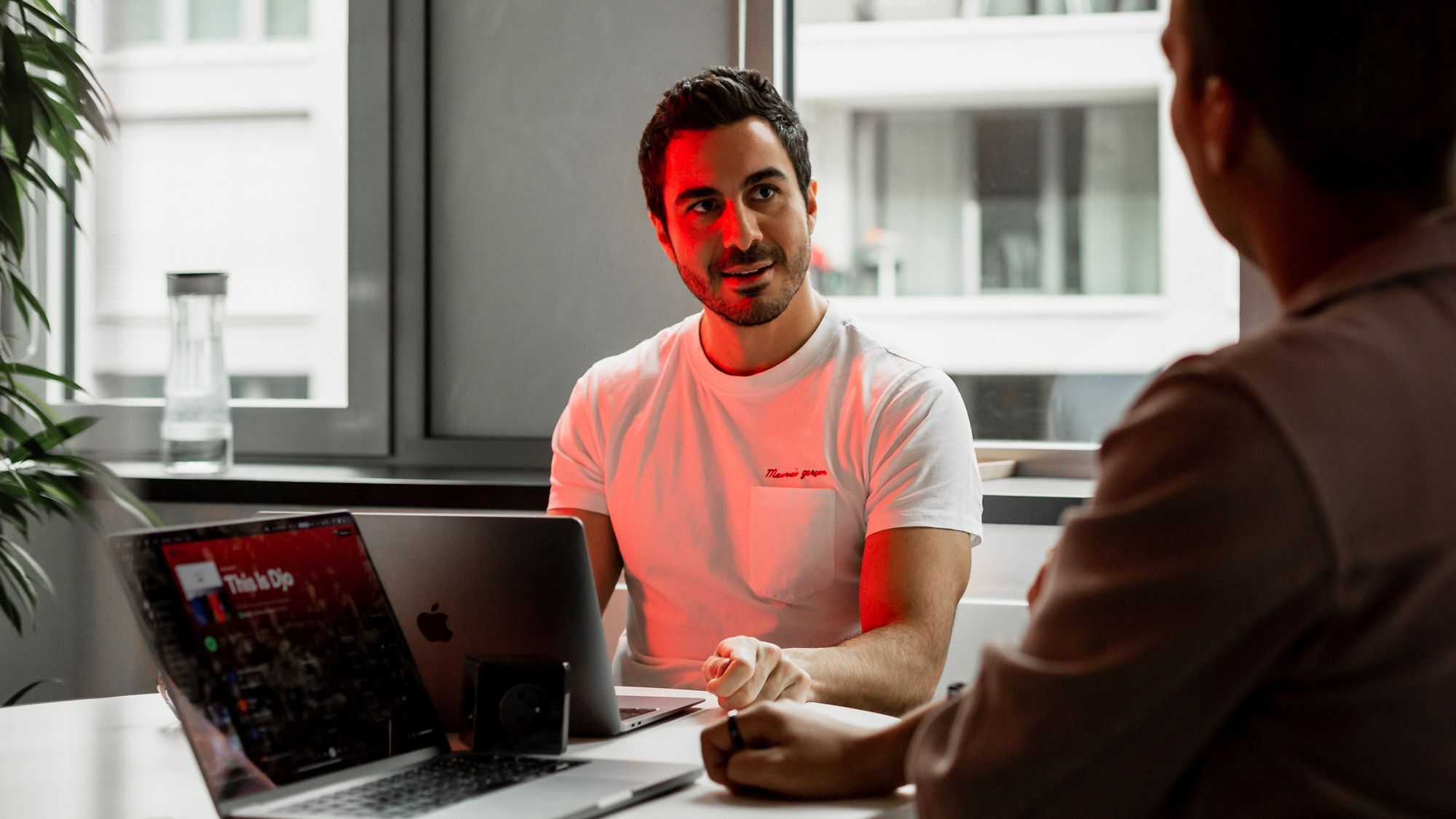As AI and ML spread through organizations, the need for data scientists is growing. For us at STRV, this is big. There are excellent opportunities on the market, and the AI/ML technologies complement many of our projects very well. Although a number of our engineers have long been honing their skills and showing notable enthusiasm in the topic, we were lacking an organized, fully dedicated team.
Enter our Data Science Department, built up by experienced data scientist Jan Maly.
Established last year, this department has been long in the making. The question was, how do we do more than just implement AI/ML technology? How can we help businesses navigate the complexities of this new territory? We needed the Data Science Lead to be someone with not just hard skills, but also the ability to help our clients identify opportunities and figure out whether an AI/ML solution is the best way to go for each specific case.
We’ve been lucky enough to find just that in Jan Maly. To tell us more about his rich experience, what STRV clients can expect in terms of our AI/ML skills and approach, and how he foresees his department evolving, Jan hopped on a call with us for an insightful chat.
Businesses are investing heavily into AI/ML. Where does STRV come in?
Although the popularity of AI/ML is on a steep rise, it usually remains less accessible for individuals, small teams and startups looking to tackle their problems. Almost all businesses want to benefit from AI/ML in the same way as big players have done. But only real experts with a long history of interest in the topic can help them to use this technology properly. That’s what we bring to the table. We have the demonstrable skills it takes to apply the most relevant AI/ML techniques to business problems, thereby bringing fast and long-term value.
As a company wanting to apply AI/ML, what should I know before starting a project?
You need to understand what kinds of problems AI can solve conceptually. AI can take on many challenges, but some are especially hard to tackle. It’s good to manage the level of your expectations. Even though there is a vast number of successful business applications with proven value, there is still a level of uncertainty when it comes to AI/ML projects. There is a high chance of failure if projects are not managed properly. The main reason is the maturity of techniques, tools and quality and quantity of available data. Data is crucial. ML usually requires vast amounts of particular kinds of data that the business may or may not have already collected.
It’s best to keep in mind that solving an ML problem that has never been solved before may fail, or it may require a lot of resources. An expert in the field can recognize the probability of failure and can search for alternatives with a higher probability of success.
How does STRV help kick off a data science project? What can our clients expect?
We can help from the very beginning — starting with the use case identification, success criteria definition and essential reality checks. This is all usually a part of the initial research phase, during which we aim to minimize most of the uncertainty when it comes to delivering the intended solution. We then propose a detailed plan for the project.
For us, it's crucial to have a clear understanding of what you want to achieve, so we can help you build it. In many cases, an AI/ML solution may not be the best solution for you. You may be better off with a much more straightforward solution. It is our responsibility to help you figure this one out.
What’s your approach to helping businesses identify AI/ML opportunities?
While this is a big part of what we do, how we do it is not that straightforward. In very simple terms: We pay attention to how others are applying AI/ML — or how we have applied it ourselves — and then think about those use cases in the current project’s context. Take, for example, content recommendations. If you shop on Amazon or watch shows on Netflix, the content you see is highly-personalized by ML algorithms that are built on the same principles. And those same algorithms can power things like a highly-personalized newsletter.
How do you expect STRV’s Data Science team to evolve?
Anything this department can do relies on the people doing it. STRV has very clear objectives, which is what attracted me to the role. As with the company’s past ambitions, there is no guesswork involved. We know what our clients need, and we know we have the abilities and motivation to deliver great results. The plan now is to attract top talent in this sphere, to expand our team and to make an impact in yet another field.
The Czech Republic is a great place to find that talent. Tech companies within the Czech Republic have repeatedly been the fastest-growing in Central Europe. Personally, I want to help promote the Czech Republic in the AI/ML world. We have passionate people who have been working hard for years in preparation of this tech takeover, and who are at the top of their game.
You came to STRV after working as a Data Scientist at a major Czech telco company, where you were an expert in Machine Learning and Big Data Processing. How does your experience translate to your position here?
Let me first go even further back. Before joining the telco company, I was mostly working with fresh startups, helping them build their first products. Doing AI/ML in startups versus big companies can be vastly different. Each world usually has a different set of problems, data available and even mindsets. Once I accumulated the startup experience, I chose to join a major company to broaden my skills from a different perspective. After some years there, I felt confident in my ability to manage an AI/ML solution for its entire life cycle, no matter how quickly a business may grow or change.
STRV works with startups and giants alike, which is where my experience comes into play. But more than that, I enjoy that the projects are always different. That made joining the STRV team a pretty easy decision.
Have you always had this enthusiasm about AI/ML?
I’ve been passionate about AI/ML since childhood, starting with computer games. I always wanted to make them more fun, more challenging, and even tried making a few games on my own. Computer games — or programs/AI trying to master those games — are pioneers in AI development.
I went on to major in Artificial Intelligence and during my studies at university, I was able to work on many exciting research and business projects involving AI. I enjoyed all of it and, seeing AI/ML's huge potential and business impact, I decided to focus on AI/ML application in industry.
Any exciting projects you have going on now that you’re able to share?
Currently, I am working on a movie recommendation engine for one of our partners. Frankly, I am quite excited about this one. Almost all of us use video streaming services like Netflix, HBO and Amazon. Each of these services uses ML to recommend a movie you might like. However, each of these services is limited to its content only. Our partner is looking to aggregate the offers of all of those providers. Just imagine the relevance of recommendations to you if an algorithm similar to that which powers the recommendations for those services could have access to all movie content you’ve liked or disliked.
This problem is interesting from an ML perspective and because the service has just started and there is almost no user data available. We got pretty creative when it came to solving this issue by using an open-sourced data set as a substitute to bootstrap our model. We’re working with techniques that can learn useful abstract representations for movies and shows, which can be really helpful when you are doing a content-aware search, or you want to find the most similar items.
This project is actually a great example of our approach. Although our partner came to us having almost no data — which is a significant obstacle — we were able to think outside of the box and find an alternative solution. Very rarely does STRV accept that there may not be a solution. There’s usually a way, it just takes creativity and a wide scope of knowledge. That’s the approach of every designer and engineer here, and the Data Science team is no different.





